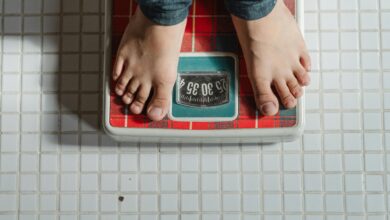How to Create a Weight Loss Workout Plan: A Step-by-Step Guide

Creating an effective weight loss workout plan requires more than just jumping into random exercises. It involves setting clear goals, understanding your body’s needs, and designing a balanced routine that combines cardiovascular exercise, strength training, flexibility work, and recovery. In this article, we’ll walk you through the process of creating a personalized weight loss workout plan that is both sustainable and results-driven.
Why Is a Structured Workout Plan Important for Weight Loss?
A structured workout plan ensures consistency, helps track progress, and prevents burnout or injury. Without a plan, it’s easy to lose motivation or fall into ineffective routines. A well-designed plan not only aids in burning calories but also builds muscle, boosts metabolism, and improves overall health—key components of long-term weight loss success.
Step 1: Set Clear and Realistic Goals
Before diving into workouts, define what you want to achieve. Your goals will shape your entire plan.
Types of Goals:
- Primary Goal : Lose weight (e.g., “I want to lose 20 pounds in 3 months”).
- Secondary Goals : Build muscle tone, improve endurance, increase flexibility, etc.
SMART Framework:
Make your goals Specific, Measurable, Achievable, Relevant, and Time-bound. For example:
- Instead of saying, “I want to lose weight,” say, “I want to lose 10 pounds in 8 weeks by exercising 5 days a week.”
Setting realistic expectations is crucial; aim for a safe weight loss rate of 1–2 pounds per week.
Step 2: Assess Your Current Fitness Level
Understanding where you stand physically will help tailor your workouts to your abilities and prevent injuries.
Questions to Ask Yourself:
- How often do I currently exercise?
- What types of physical activities am I comfortable with?
- Do I have any pre-existing medical conditions or injuries?
Tools for Assessment:
- Fitness Tests : Perform simple tests like a timed mile run, push-up count, or flexibility stretch to gauge your baseline fitness.
- Body Measurements : Track your weight, body fat percentage, waist circumference, and other metrics to monitor progress.
Step 3: Choose the Right Types of Exercise
A successful weight loss workout plan incorporates a mix of different exercises to maximize calorie burn, build lean muscle, and enhance overall fitness.
1. Cardiovascular Exercise
Cardio is essential for burning calories and improving heart health. Aim for at least 150 minutes of moderate-intensity cardio or 75 minutes of vigorous-intensity cardio per week.
- Moderate Intensity : Brisk walking, cycling, swimming, dancing.
- Vigorous Intensity : Running, high-intensity interval training (HIIT), spinning classes.
Example Cardio Schedule:
- Monday: 30-minute jog
- Wednesday: 45-minute cycling session
- Friday: HIIT workout (20 minutes)
2. Strength Training
Building muscle increases your resting metabolic rate, meaning you’ll burn more calories even at rest. Include strength training exercises at least 2–3 times per week.
- Focus on major muscle groups: legs, back, chest, arms, core.
- Use free weights, resistance bands, or bodyweight exercises.
Sample Strength Routine:
- Squats: 3 sets of 12 reps
- Push-ups: 3 sets of 10 reps
- Deadlifts: 3 sets of 10 reps
- Plank hold: 3 rounds of 30 seconds
3. Flexibility and Mobility Work
Stretching and mobility exercises reduce the risk of injury, improve posture, and aid recovery.
- Incorporate yoga, Pilates, or dynamic stretching sessions 2–3 times per week.
- Stretch after every workout to cool down and relax muscles.
4. Active Recovery
Rest days are just as important as workout days. Engage in low-intensity activities like walking, light yoga, or foam rolling to promote recovery.
Step 4: Determine Frequency and Duration
The frequency and duration of your workouts depend on your schedule, fitness level, and goals. Here’s a general guideline:
- Beginners : Start with 3–4 days of exercise per week, gradually increasing intensity.
- Intermediate/Advanced : Aim for 5–6 days of exercise, alternating between cardio, strength, and active recovery.
Weekly Workout Template:
| Day | Activity | Duration |
|---|---|---|
| Monday | Cardio (jogging) | 30 minutes |
| Tuesday | Strength Training (upper body) | 45 minutes |
| Wednesday | Active Recovery (yoga/stretching) | 30 minutes |
| Thursday | Cardio (HIIT) | 20 minutes |
| Friday | Strength Training (lower body) | 45 minutes |
| Saturday | Cardio (cycling/swimming) | 45 minutes |
| Sunday | Rest or Light Walk | As needed |
Step 5: Monitor Progress and Adjust Accordingly
Tracking your progress keeps you motivated and allows you to tweak your plan as needed.
Ways to Track Progress:
- Weight and Body Measurements : Weigh yourself weekly and measure inches lost.
- Workout Logs : Record details like reps, sets, and how you felt during each session.
- Photos : Take progress pictures every few weeks to visually see changes.
- Performance Metrics : Note improvements in endurance, strength, or speed.
When to Adjust:
If you plateau or feel overly fatigued, reassess your routine. You might need to:
- Increase intensity or duration.
- Change exercises to keep things fresh.
- Add more recovery time if you’re overtraining.
Step 6: Combine Exercise with Nutrition
Exercise alone won’t lead to significant weight loss without proper nutrition. Pair your workout plan with a balanced diet rich in whole foods, lean proteins, healthy fats, and complex carbohydrates.
Tips for Combining Exercise and Nutrition:
- Eat a protein-rich snack within 30 minutes post-workout to aid recovery.
- Stay hydrated throughout the day.
- Avoid processed foods and sugary drinks that can sabotage your efforts.
Step 7: Stay Consistent and Motivated
Consistency is key to achieving weight loss goals. Here are some tips to stay motivated:
- Set Milestones : Celebrate small victories along the way, like completing your first month or losing 5 pounds.
- Find Accountability : Work out with a friend, join a fitness class, or hire a personal trainer.
- Mix It Up : Prevent boredom by trying new activities like Zumba, rock climbing, or paddleboarding.
- Visualize Success : Keep reminders of your goals visible, such as vision boards or motivational quotes.




